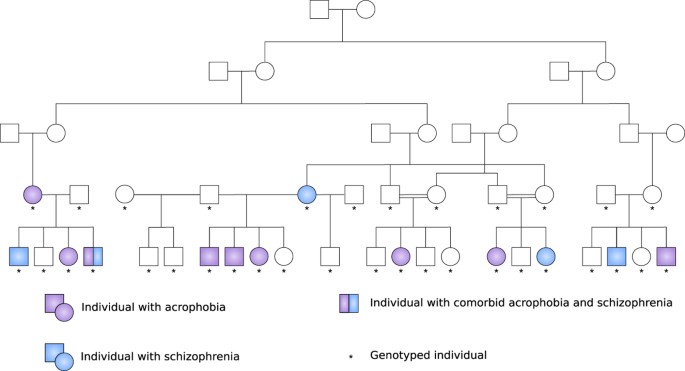
- Select a language for the TTS:
- UK English Female
- UK English Male
- US English Female
- US English Male
- Australian Female
- Australian Male
- Language selected: (auto detect) - EN
Play all audios:
This Genome Watch article highlights recent findings that expand the known diversity of methanogenic archaea and the metagenomic evidence that led to their identification and cultivation.
You have full access to this article via your institution. Download PDF Methane is an important component of the global carbon cycle. Approximately two-thirds of global methane emissions are
produced by archaea known as methanogens1. Methanogenesis is an anaerobic process found in anoxic environments including aquatic sediments, landfills and animal digestive systems. Until
recently, methanogens were only known to be members of the archaeal superphylum Euryarchaeota, but metagenome-based studies offered clues for where and how to cultivate novel lineages.
Discovery of methanogenesis marker genes in metagenome-assembled genomes (MAGs) has revealed a more diverse population than previously thought2. Genes encoding the methanogenesis protein
methyl-coenzyme M reductase (MCR) were found in MAGs annotated from the archaeal phyla Asgardarchaeota, Hadarchaeota and Thermoproteota. These assembled genomes also contain genes for
alternative electron-accepting pathways from what was canonically known for methanogens. Three recent studies detail the cultivation and experimental evidence that led to the descriptions of
novel Thermoproteota lineages that are capable of methyl-reducing methanogenesis3,4,5. The samples were collected from hot spring and oilfield environments, which harbour conditions
observed in metagenomic studies to host highly diverse MCR-containing genomes. Once in culture, researchers assessed their physiological properties, including the confirmation of methane
production with an array of experimental methods. Credit: Amie Fernandez/Springer Nature Limited One of the recently described methanogens, ‘_Candidatus_ Methanodesulfokora washburnensis’
strain LCB3, was cultured with a medium designed specifically to enrich for its metabolism3. The predicted metabolisms of _Ca_. M. washburnensis MAGs were used to determine the metabolic
requirements conducive to LCB3 cultivation. The genome variation between LCB3 and related MAGs from Washburn Hot Springs in Yellowstone National Park indicates a species population composed
of several strains, all capable of methyl-reducing methanogenesis. In the case of LCB3, methanogenesis was confirmed experimentally with a combination of bioorthogonal non-canonical amino
acid tagging and fluorescence in situ hybridization to show anabolic activity under methanogenic conditions. However, unlike most cultured methanogens, transcriptional data suggest that LCB3
may use electron donors other than hydrogen. With differences from previously cultured methanogens, the 16S rRNA gene of LCB3 branches from deep within the known Thermoproteota phylogeny,
establishing its importance as a model for studying methanogen evolution. Another methanogen from a Yellowstone National Park hot spring, ‘_Candidatus_ Methanosuratincola verstraetei’ strain
LCB70, has closely related 16S rRNA genes found in a wide range of global anoxic environment metagenomes4. In laboratory cultures, LCB70 produced methane when supplied with methanol and
hydrogen, and in fact lacks genes for the more studied carbon dioxide-reducing or acetoclastic pathways of methanogenesis. When hydrogen is not supplied to enriched cultures containing
methanogens and methanol degraders, LCB70 seems capable of acquiring hydrogen from coexisting organisms. A stable isotope tracer experiment with 13C-methanol showed probable methanol
metabolism producing carbon dioxide, hydrogen and acetate, which supplies LCB70 and other methanogens with metabolic reactants. Gene expression data also suggest that LCB70 may use lactate
as an electron donor, although the exact mechanism of lactate utilization requires further investigation. In contrast to its hot spring relatives, _Methanosuratincola petrocarbonis_ LWZ-6
was isolated from oil-produced water in the Shengli oilfield (China)5. Although cultured from a geographically and biogeochemically different environment, analysis of LWZ-6 methanogenic
properties, metagenomically described relatives and genome content reveals remarkable metabolic similarity with that of LCB3 and LCB70. Contrary to previous metagenome-based predictions,
LWZ-6 was not capable of fermentation alone, but was found to use hydrogen produced by _Acetomicrobium_ sp. CY-2 when grown in co-culture. Together, these reports of novel methanogenic
lineages and the metagenomic evidence that led to their discovery are exemplary cases of metagenome-guided cultivation. These cultures unlock future biochemical discovery through
experimentation and expand our understanding of methanogenesis and global methane emissions. REFERENCES * Conrad, R. The global methane cycle: recent advances in understanding the microbial
processes involved. _Environ. Microbiol. Rep._ 1, 285–292 (2009). Article PubMed CAS Google Scholar * Lynes, M. M. et al. Diversity and function of methyl-coenzyme M reductase-encoding
archaea in Yellowstone hot springs revealed by metagenomics and mesocosm experiments. _ISME Commun._ 3, 22 (2023). Article PubMed PubMed Central Google Scholar * Krukenberg, V. et al.
Methyl-reducing methanogenesis by a thermophilic culture of Korarchaeia. _Nature_ 632, 1131–1136 (2024). Article PubMed CAS Google Scholar * Kohtz, A. J. et al. Cultivation and
visualization of a methanogen of the phylum Thermoproteota. _Nature_ 632, 1118–1123 (2024). Article PubMed CAS Google Scholar * Wu, K. Isolation of a methyl-reducing methanogen outside
the Euryarchaeota. _Nature_ 632, 1124–1130 (2024). Article PubMed CAS Google Scholar Download references AUTHOR INFORMATION AUTHORS AND AFFILIATIONS * DOE Joint Genome Institute,
Lawrence Berkeley National Laboratory, Berkeley, CA, USA Matthew Kellom Authors * Matthew Kellom View author publications You can also search for this author inPubMed Google Scholar
CORRESPONDING AUTHOR Correspondence to Matthew Kellom. RIGHTS AND PERMISSIONS Reprints and permissions ABOUT THIS ARTICLE CITE THIS ARTICLE Kellom, M. Methanogens implicated by DNA evidence.
_Nat Rev Microbiol_ 23, 71 (2025). https://doi.org/10.1038/s41579-024-01135-w Download citation * Published: 27 November 2024 * Issue Date: February 2025 * DOI:
https://doi.org/10.1038/s41579-024-01135-w SHARE THIS ARTICLE Anyone you share the following link with will be able to read this content: Get shareable link Sorry, a shareable link is not
currently available for this article. Copy to clipboard Provided by the Springer Nature SharedIt content-sharing initiative










